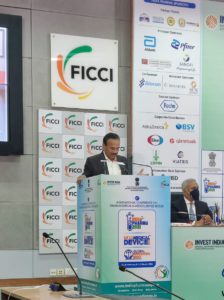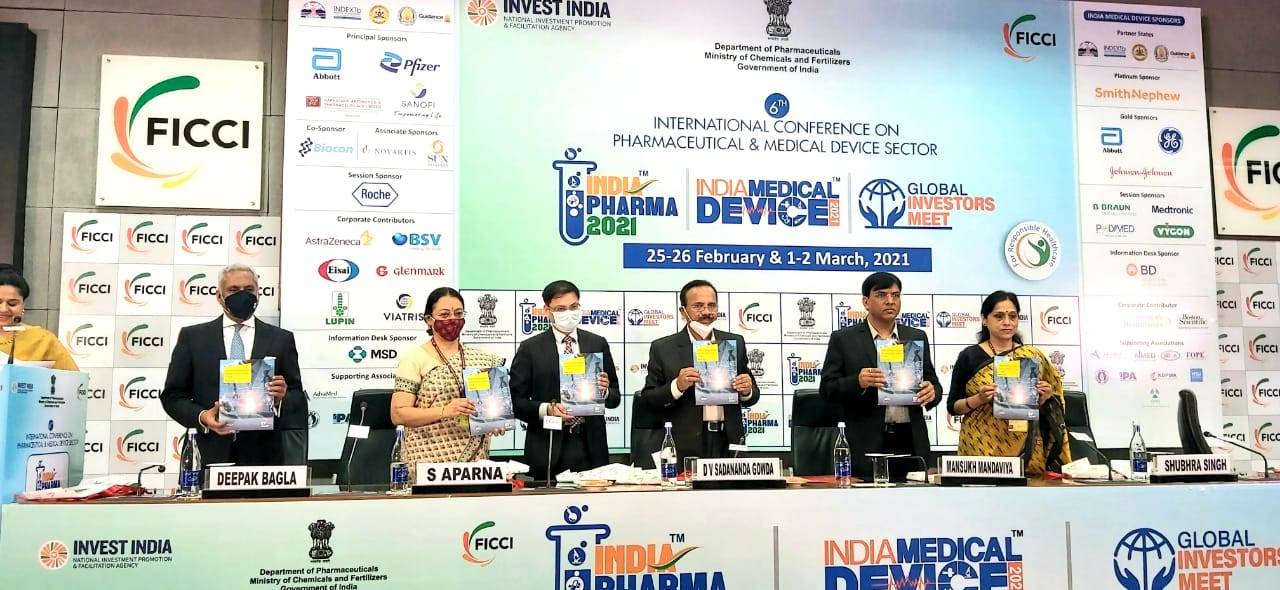Amritsar, NFA Post: The government is working towards reducing the regulatory compliance burden on the pharmaceutical industry in an effort to improve ease of doing business, Union Minister for Chemicals & Fertilisers D.V. Sadananda Gowda said.
“Pharma Bureau established (last year) in the Department of Pharma has started actively engaging with industry, handholding the investors and taking up the pending issue of investors with various Government departments,” a statement by the ministry quoted Gowda as saying.
Gowda was speaking at the inaugural session of the 6th international conference on pharmaceutical and medical devices sector called ‘The India Pharma 2021 and India Medical Device 2021’.
The minister also noted that the domestic pharma industry has the capability to achieve the target of $130 billion turnover by 2030, while the medical device industry in the country has the potential to grow at 28% per annum to reach $50 million by 2025.
“FDI growth has been close to 100% year on year, reflecting the incredible level of opportunity that is being tapped into,” Gowda said adding that “In this edition of India Pharma Medical Device 2021, the goal is to identify ways to realise the potential of the industry such that we can emerge an even stronger supplier of quality drugs and medical devices, through solving challenges and plan for continued growth.”
Production Linked Incentive Scheme (PLI)
The minister highlighted India’s capabilities as a global and reliable supplier of drugs and medical devices during the Covid-19 pandemic.
As the pandemic exposed the global vulnerabilities of the supply chains in the pharmaceuticals sector, the Department of Pharmaceuticals launched the PLI for bulk drugs, with a financial outlay of 69.4 billion rupees across 53 APIs over six years, Gowda said.
For Medical Devices, another PLI scheme was announced with an outlay of 34.2 billion rupees, he added.
The Cabinet on Wednesday had approved another PLI scheme worth 150 billion rupees for high value products in pharmaceuticals.
This new scheme aimed at promoting cutting-edge technologies in the industry and increasing value addition in exports, is expected to generate employment for both skilled and unskilled personnel, estimated at 20,000 direct and 80,000 indirect jobs as a results of growth in the sector.
“Such interventions and incentives have played an instrumental role in realising Prime Minister’s vision of ‘Aatmanirbhar Bharat’, or India for the world,” the minister said.

Minister for Commerce, Railways and Consumer Affairs, Piyush Goyal stressed on the point that globally India is a one stop solution provider for the entire health ecosystem.
“Regulatory and good manufacturing practices, systems and certifications, approvals, will always help us grow in scale and bring down the price,” Goyal added.
Key Highlights of EY-FICCI report:
EY-FICCI report titled ‘Indian Pharmaceutical Industry 2021: future is now’ was also launched during the event, some of the highlights from which are as follows:
Accelerating research and innovation:
- There is a need to move up India’s share of trade in value
- To meet this objective, the industry must consider setting up an overarching regulatory body and a central body to streamline research infrastructure and financing from all government bodies, to explore new models for financing R&D to increase private investments and also make available funds for high risk and long-term projects, improve industry-academia collaboration and establish a strong innovation ecosystem.
Achieving equitable and sustainable healthcare:
- The increased acceptability of digital technologies has the potential to improve healthcare delivery. This explores the progress towards achievement of universal healthcare access, establishing efficient processes like the use of Aadhar card to identify and simplify the delivery based on healthcare coverage category.
- Enabling tele-consulting and focusing on preventive healthcare are some other areas for consideration with the role of the role of the industry, government, healthcare sector and insurers carved out.
Strengthening manufacturing and supply base in domestic and global markets:
- The focus of manufacturing and supply chain initiatives would be to develop capabilities in APIs and enable the manufacturing of complex generics. Ease of doing business is a critical enabler to set up world class manufacturing facilities.
- The attractiveness of the manufacturing sector too needs to be enhanced in order to attract the best talent in India and abroad.
- Given the growth ambitions, it is vital to encourage and setup pharma machine manufacturing facilities in India to lower fixed costs, enable savings in forex and reduce time to set up additional facilities.
- There is also a need to bolster the logistics infrastructure for connecting the key pharma hubs in the country in order to facilitate quick and cost efficient movement of goods including cold chain facilities
Improving access to medicines:
- The market access to prescription drugs needs to improve in the country
- Various global best practices in drug pricing and procurement models can be contextualized for developing geographies Digital marketing of pharma products too must be considered





